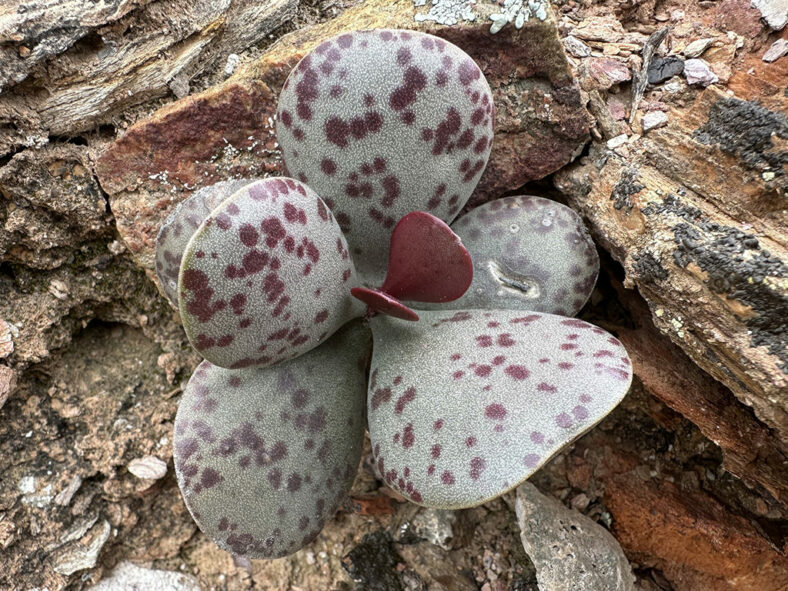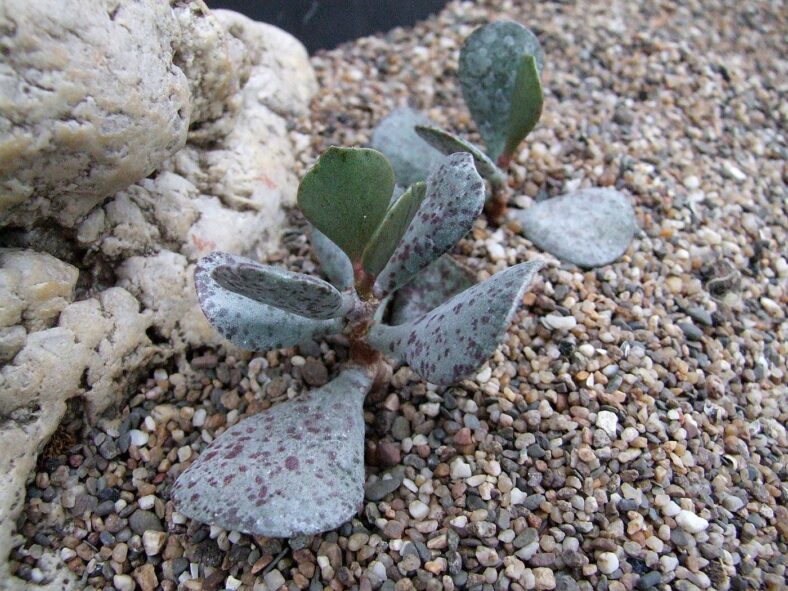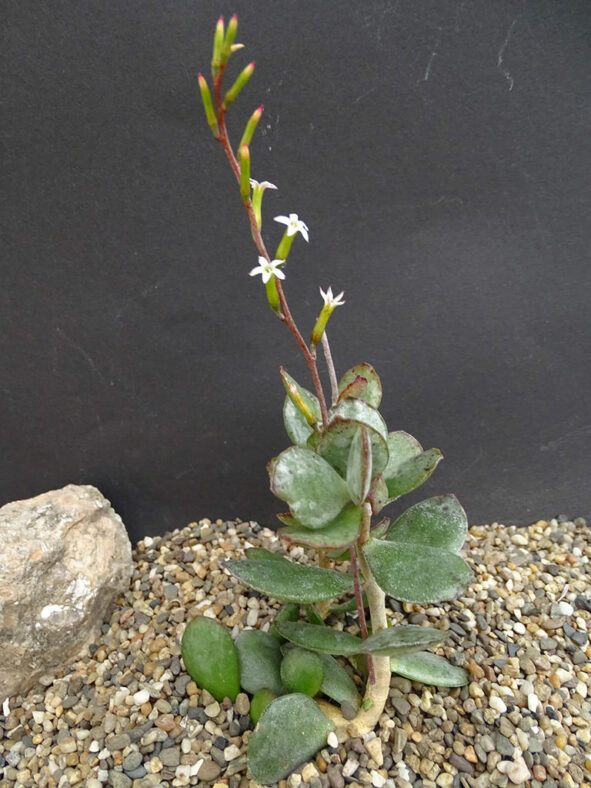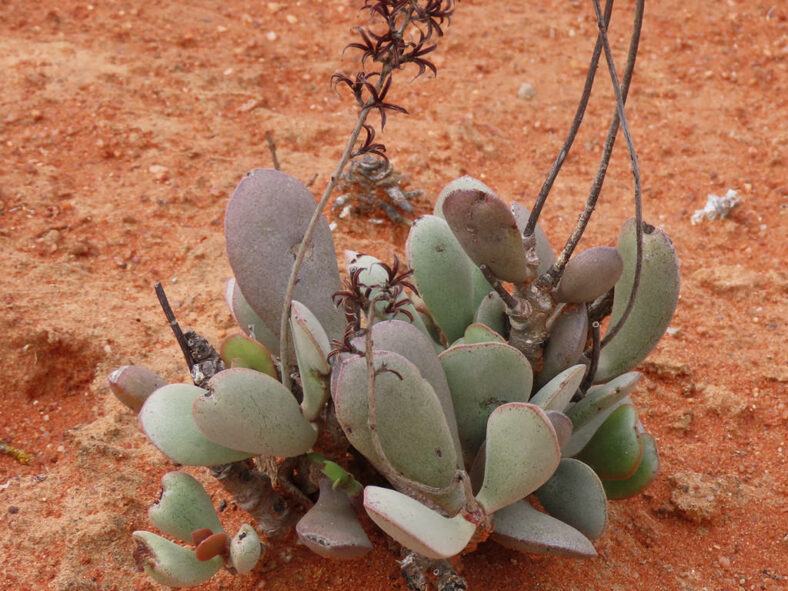Adromischus alstonii is a variable species that shows local variation in stem length, branching, leaf size and shape, as well as the number and intensity of purple markings on its leaves.
Scientific Name
Adromischus alstonii (Schönland & Baker fil.) C.A.Sm.
Synonym(s)
Cotyledon alstonii
Scientific Classification
Family: Crassulaceae
Subfamily: Kalanchoideae
Genus: Adromischus
Etymology
The specific epithet "alstonii" (pronounced "al-STON-ee-eye") honors Edward Garwood Alston (1862-1934), a farm manager and plant collector in the Northern Cape province of South Africa who sent plants to Peter MacOwan and Selmar Schönland.
Origin
The native range of Adromischus alstonii extends from Witpütz in southern Namibia to Garies in the Northern Cape province of South Africa. It grows on stony slopes in crevices or under bushes.
Description
Adromischus alstonii is a small succulent with decumbent to erect branches that bear grey leaves with flaking wax and occasionally purple spots. The branches vary in color from grey-green to brownish-green, have peeling bark, and can grow up to 12 inches (30 cm) long and 0.6 inches (1.5 cm) in diameter. The fleshy leaves are inversely lance-shaped to egg-shaped and can measure up to 3.2 inches (8 cm) in length and 1.7 inches (4.3 cm) in width. They are flattened on both sides and have a horny margin in the upper half.
During midsummer, Adromischus alstonii produces flowers in a spike-like, usually unbranched inflorescence. The flowers have a grey-green calyx and brownish-green, cylindrical corolla tube with five broadly triangular lobes that may be white or tinged with pink and are rough inside. The corolla tube can reach a length of 0.5 inches (1.2 cm), while the lobes can reach up to 0.12 inches (0.3 cm).

How to Grow and Care for Adromischus alstonii
Light: Adromischus alstonii requires bright sunlight to thrive. If you are growing it indoors, it is best to place it near a sunny window or use a grow light.
Soil: For optimal health, use well-draining soil. You can choose a commercial soil mix formulated for succulents or make your own.
Temperature: If the soil is kept dry, this plant can tolerate high temperatures and cool, frost-free conditions in winter. Adromischus alstonii grows best in USDA Plant Hardiness Zones 10a to 11b, with average minimum winter temperatures ranging from 30°F to 50°F (-1.1°C to 10°C).
Watering: During the growing season, water the plant deeply enough for water to run out of the holes in the bottom of the pot. Allow the soil to dry out completely before watering again. Do not water the plant in winter.
Fertilizing: Feed your plant with a water-soluble fertilizer only during the growing season to promote optimal growth.
Repotting: You do not need to repot this plant frequently. Repot it only when it outgrows its current pot or if the pot is becoming too shallow. Choose a pot with at least one drainage hole at the bottom.
Propagation: You propagate Adromischus alstonii by stem cuttings, leaves, or seeds. It is best to take cuttings during the growing season, and spring is ideal for sowing seeds if you prefer to start the plant that way.
Learn more at How to Grow and Care for Adromischus.
Toxicity of Adromischus alstonii
Adromischus alstonii is non-toxic and safe in households with children and pets.
Links
- Back to genus Adromischus
- Succupedia: Browse succulents by Scientific Name, Common Name, Genus, Family, USDA Hardiness Zone, Origin, or cacti by Genus
Photo Gallery
Click on a photo to see a larger version.


